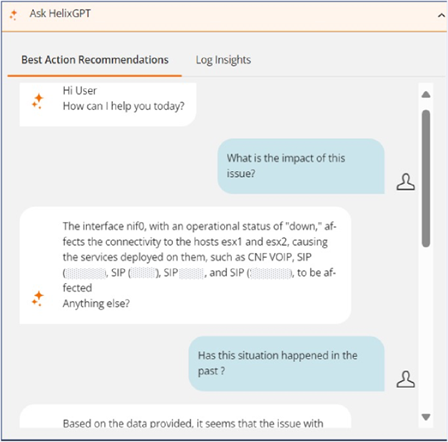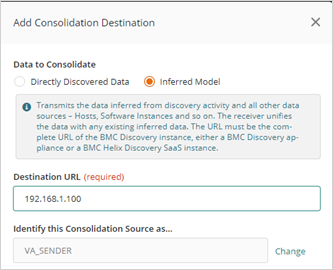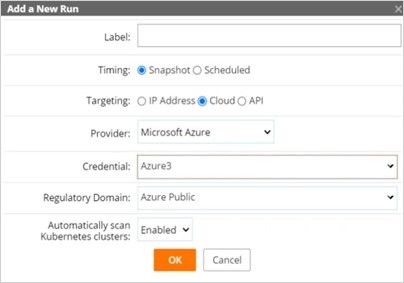Historically, resolving complex service performance issues required IT teams to have years of experience. However, during an incident or an outage, it may be hard for these teams to find information about the systems or infrastructure, or know which actions to take to resolve problems. With the ever-growing complexity of IT environments, IT teams require a new level of efficiency to find the root cause and resolve issues. The latest BMC Helix ITOM 24.3 release accelerates the troubleshooting and resolutions workflows, all while improving efficiency, service levels, and the overall IT operator experience, with three new enhancements.
- BMC Ask HelixGPT Virtual Assistant: Improve troubleshooting workflows and the site reliability engineer (SRE) experience.
- BMC Helix Discovery-to-Dynamic Service Model (DSM) Sync: Unify discovered data for hybrid deployments and enabling business continuity.
- BMC Helix Discovery: Boost IT efficiency with new automations and enable quicker time to value with automatic Kubernetes discovery in the public cloud.
BMC Ask HelixGPT Virtual Assistant
In The Forrester Wave™: Process-Centric AI For IT Operations (AIOps), Q2 2023, BMC Helix was named a leader in the industry, acknowledged for our commitment to disruption, ability to empower DevOps, SRE, and network operations center (NOC) teams to detect and respond effectively, as well as the enhancements that continuously detect the state of infrastructure and recommend actions. The latest release builds on our leading automated remediation capabilities with the introduction of Ask HelixGPT Virtual Assistant to improve workflow efficiency.
One challenge that DevOps, SRE, and NOC teams encounter is the inability to identify the main cause and apply better actions, leading to difficulty in addressing incidents promptly. The Ask HelixGPT Virtual Assistant accelerates the troubleshooting workflow by providing predefined prompts to answer questions that lead to better understanding of complex systems and faster remediation.
- Get to the source of problems faster by asking questions in context of the situation.
- Eliminate manual troubleshooting and correlation of observability signals and change events.
- Gain a deeper understanding of your complex systems and apply better actions.

Figure 1. Ask HelixGPT Virtual Agent.
BMC Helix Discovery-to-DSM Sync
Synchronizing discovery data across on-premises and cloud environments brings a wealth of benefits to IT organizations by removing data silos, improving IT asset and service visibility, and empowering IT teams to resolve issues faster. This release introduces the capability to synchronize inferred discovery data (IDD) from an on-premises BMC Helix Discovery instance to another, whether in SaaS or on-premises environments, allowing organizations to use relevant data in the cloud while maintaining control of sensitive data in on-premises environments. This empowers IT teams to meet data security and regulatory compliance requirements while satisfying the operational needs of the business.
With the new BMC Helix Discovery-to-DSM Sync, on-premises BMC Helix Discovery data can now be used by the BMC Helix platform to enhance AIOps and observability. The new IDD sync also allows syncing of inferred hosts, software, network infrastructure, and storage devices, etc., and relationships from one BMC Helix Discovery instance to another. IT teams have the flexibility to use BMC Helix Discovery in their existing IT infrastructure with minimal operational interruption.
The new IDD sync also provides an efficient on-premises data consolidation option when raw directly discovered data (DDD) is not required. For IT practitioners who need to unify discovered data across multiple on-premises BMC Helix Discovery appliances for improved visibility and business continuity, this new capability is a great solution.

Figure 2. BMC Helix Discovery-to-DSM Sync
BMC Helix Discovery
Automation is crucial to improving operational efficiency. New BMC Helix Discovery enhancements focus on providing immediate value out of the box with automations and a better user experience for both our SaaS and on-premises customers.
Reduce manual management with BMC Helix Discovery management APIs
BMC Helix Discovery management APIs help IT teams automate the administrative setup and ongoing management of the on-premises BMC Helix Discovery deployment, thereby reducing manual maintenance. With the upgrade API, IT teams can perform an upgrade through an API process instead of manually. The register outposts API lets IT administrators automatically register the BMC Helix Discovery outpost with the BMC Helix Discovery service. Other REST APIs for making administrative changes and getting status updates include:
- Adding and removing BMC Helix Discovery users
- Adding and removing BMC Helix Discovery user groups
- Setting baseline settings
- Viewing the status of SMTP settings
- Viewing the status of LDAP settings
- Viewing the status of BMC Helix Discovery proxy pools
- View the status of BMC Helix Discovery clusters
Remove operational toil with automatic Kubernetes discovery in public cloud
Currently, customers who have deployed multiple Kubernetes deployments in the public cloud face operational toil in managing and maintaining the credentials of individual clusters, which is a pre-requisite for BMC Helix Discovery to discover the Kubernetes clusters and their mapping. Moving forward, this operational pain point is removed.
The current method BMC Helix Discovery uses to discover Kubernetes clusters requires a separate Kubernetes scan from the schedule scan for cloud. So, when BMC Helix Discovery finds Kubernetes clusters in an organization’s cloud during a cloud scan, a separate Kubernetes scan (with a separate credential to access each cluster) would need to be scheduled. If an organization has hundreds or thousands of clusters, this is inefficient and very time-consuming.
The new cloud Kubernetes BMC Helix Discovery capability allows BMC Helix Discovery to discover Kubernetes deployments without configuring and managing credentials for every Kubernetes cluster. The IT team would only need to run the cloud scan, which will find the Kubernetes clusters and then automatically start scanning the clusters to understand which containers are there and perform a deep dive as part of the cloud scan.
This capability uses the cloud API credential to enable automatic scanning of Kubernetes clusters. The only setup the IT team would need to do is give that cloud API credential additional access for BMC Helix Discovery.
By bringing the capabilities of cloud and Kubernetes scanning together, BMC Helix Discovery improves efficiency and removes the operational overhead of deploying credentials for every cluster.

Figure 3. Cloud Kubernetes discovery using existing cloud credentials.
Improve visibility with BMC Helix Discovery Technology Knowledge Updates (TKU)
Expanded BMC Helix Discovery Technology Knowledge Updates (TKU) include new cloud (Microsoft Azure), Kubernetes, software, storage (NetApp and Dell EMC), and network (Cisco Meraki, Fortigate Firewalls, SNMP device definitions) coverage that improves visibility into the IT landscape. For the full list, see our documentation.
Other new enhancements include intelligent collectors for Netreo to further consolidate events for end-to-end visibility from application to infrastructure and network.
We’re continuing to optimize how IT teams interact with our observability and AIOps solution. Whether through REST APIs, intelligent integration, or data synchronization, each update aims to improve IT operational efficiency and observability. Stay tuned for more innovative features to come. To learn more about the BMC Ask HelixGPT Virtual Assistant, contact us for a consultation.
These postings are my own and do not necessarily represent BMC's position, strategies, or opinion.
See an error or have a suggestion? Please let us know by emailing blogs@bmc.com.






